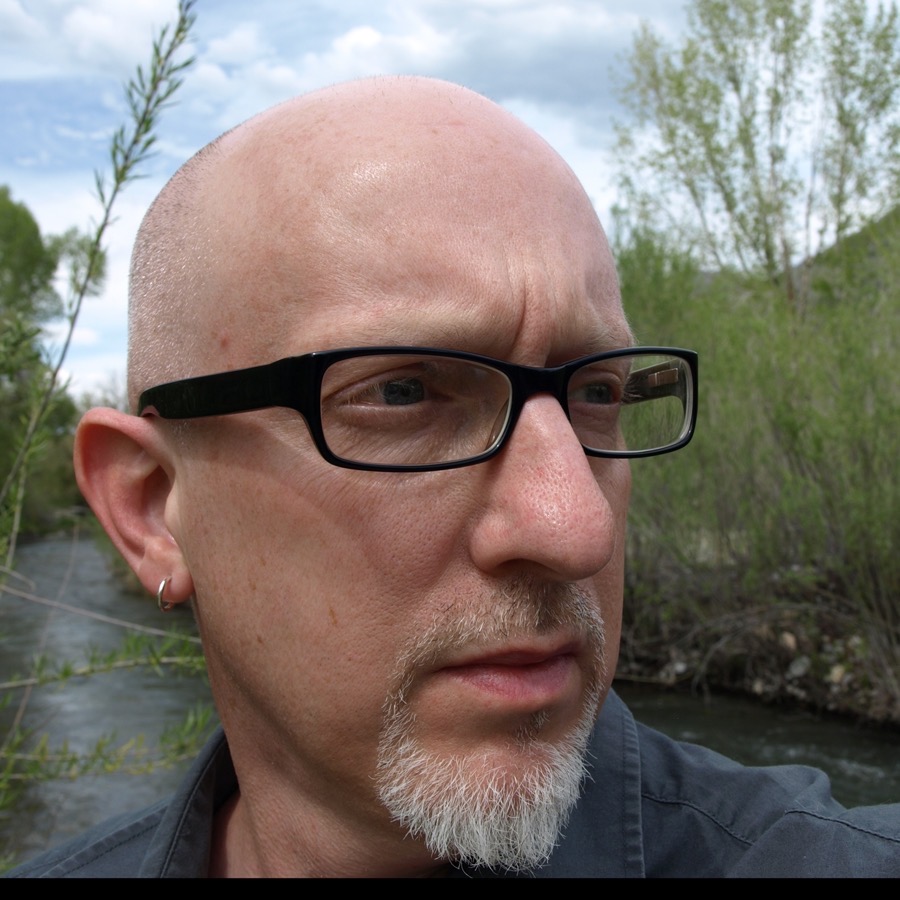Christopher Cokinos was born in Indianapolis, Indiana, in 1963, and lived there until he attended Indiana University, where he received an English bachelor’s degree with a journalism minor. He went on to complete an MFA in Writing, on a University Fellowship, at Washington University in St. Louis. For a time he edited Research & Creative Activity at Indiana University and he would later found and edit Isotope: A Journal of Literary Nature and Science Writing at Utah State University. He taught at USU from 2002 to 2011, having previously worked as an editor and teacher at Kansas State University. He left USU to take a position at the University of Arizona, where he is an Associate Professor of English, Affiliated Faculty with the Institute of the Environment and the longest-serving mentor with the Carson Scholars program in science communication. He still considers Utah his home.
Not long after relocating to Tucson, Cokinos, with his wife the writer Kathe Lison, bought a nearly century-old log cabin in Logan Canyon, where they spend as much time as possible. While at USU, they lived on four acres along the Blacksmith Fork River in southern Cache Valley. They are deeply connected to the landscapes of Utah, and Cokinos’s current nonfiction project—a multi-valent look at the Moon—includes meditations on wilderness and the sublime as encountered in such places as the High Uintas and the Bear River Range of the northern Wasatch.
He has a telescope in Tucson and another in Logan Canyon.
Cokinos has traveled widely for his nonfiction research, including locating an Ohio hilltop where the last known wild Passenger Pigeon was shot, traversing the Antarctic ice sheet in search of meteorites while on a scientific expedition and sailing by open boat 600 miles north of the Arctic Circle in search of the sites where explorer Robert Peary stole massive iron meteorites from the Inuit. Such research culminated in his books Hope Is the Thing with Feathers: A Personal Chronicle of Vanished Birds (Tarcher/Penguin, 2000) and The Fallen Sky: An Intimate History of Shooting Stars (Tarcher/Penguin, 2009). He is also a poet, with his book The Underneath winning a New American Poetry Prize (selected by Gabe Gudding) and published in 2019. With Eric Magrane, he has helped to found a new genre, the literary field guide.
Among other prizes and honors Cokinos has earned are a Whiting Foundation award, the Glasgow Prize for an Emerging Writer, an N.S.F. Antarctic Visiting Artist and Writer Fellowship, two publication grants for Isotope from the N.E.A., the Sigurd Olson Nature Writing Award, a Kavli Fellowship for science-communication training, a Journalism and Media Fellowship from UCLA’s Institute for the Environment and Sustainability, a Southwest Book Award (with co-editor Eric Magrane) and a fellowship from the Rachel Carson Center at Ludwig Maximillian University in Munich.
His poetry and prose have appeared widely, in such venues as Scientific American, Poetry, Orion, Pacific Standard, Sky & Telescope, TYPO, Sugar House Review, Dark Mountain and The New York Times. He contributes occasional essays to The Los Angeles Times.
Works
The Boneyard
The Boneyard
Entry Poem for “Turkey Vulture” in The Sonoran Desert: A Literary Field Guide. As with all work in this hybrid book, the poem or prose piece is followed by a natural-history guide including information on habitat, description and life history.
Our gills grew over.
It was cryptic how it happened. So did theirs.
Something can fly its whole life then land forever.
We had grown the right kind of thumbs
but that was just another accident.
Other things ran up the trees with what became
the wing. Molecules have no plan
but somehow effort works without trying.
We perfect beams. Precisely groove
the interiors of alloy tubes.
Altimeters become an emissary.
Because the word miracle has nothing to teach us
we think it’s somehow wiser
than either the toggle or the beak.
Machines preen. Maps draw.
We get so much wrong but that’s also beautiful.
Over the Boneyard, vultures drift like endings.
Massif: An Unmaking
Massif: An Unmaking
Excerpt from “Massif: An Unmaking,” The Fallen Sky.
A few months after returning from Antarctica, I went birding on Antelope Island, which, shaped like a sea horse, rises from the south end of the Great Salt Lake and on which sing horned larks. Their notes tinkle like cut ice. The January fog covered much of the horizon, a whiteness becoming cloud-gray. The still water shone blue, in places silver, so heavy with salt it looked almost gelatinous, and a purple band rimmed the earth. Where sky and water and fog and earth and self began or left off was hard to say. Clumps of snow edged the Davis County Causeway, and I felt for the first time that I was back, back in Antarctica, standing at the LaPaz Icefield, and I was grateful because I had things to set straight.
It was a year to the day of my confession in the tent.
From time to time, I think of what I wrote on a restaurant napkin that I mailed to Kathe from the Los Angeles Airport as I waited for my long flight to New Zealand. I wrote, “The marvels of adventure are nothing beside the clarities of home.”
She pinned the napkin to a bulletin board beside our telephone, where it remains.
Bibliography
Hope Is the Thing with Feathers: A Personal Chronicle of Vanished Birds (Tarcher/Penguin, 2000). Research-based literary nonfiction.
The Fallen Sky: An Intimate History of Shooting Stars (Tarcher/Penguin, 2009). Research-based literary nonfiction.
Bodies, of the Holocene (Truman, 2013).Lyric essays.
Held as Earth (Finishing Line, 2014). Poetry.
The Sonoran Desert: A Literary Field Guide (Arizona, 2016). Anthology and field guide. Co-edited with Eric Magrane.
The Underneath. (New American, 2019). Poetry.
Beyond Earth’s Edge: The Poetry of Spaceflight. (Forthcoming, Arizona). Co-edited with Julie Swarstad-Johnson and supported with a grant from the Alfred P. Sloan Foundation.


